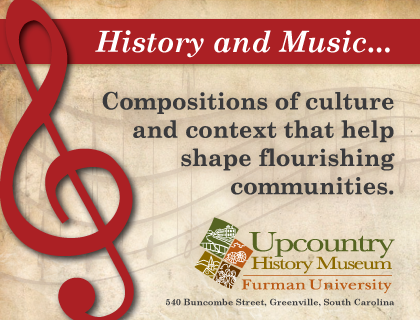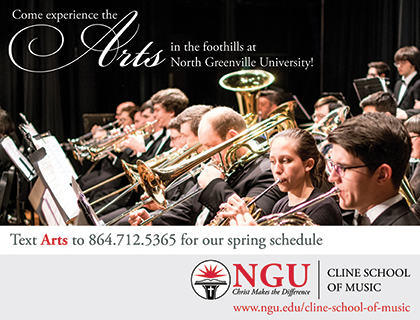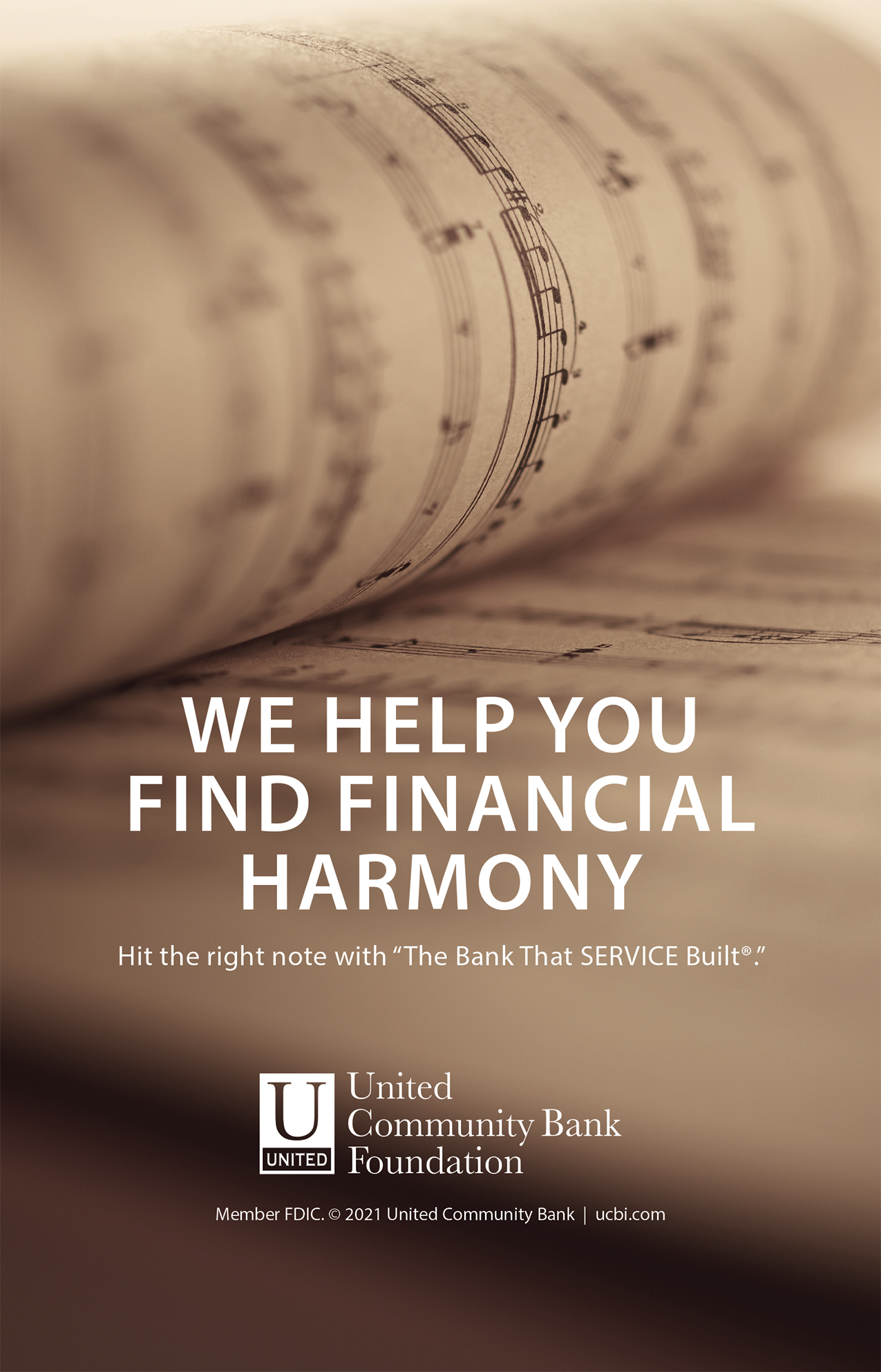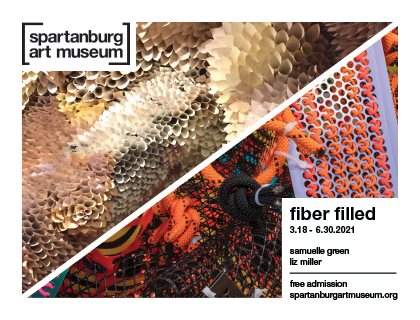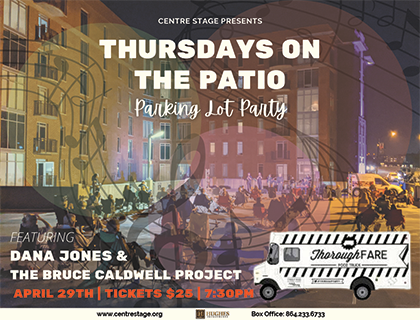
Saturday, April 10, 2021 at 8:00 p.m.
Sunday, April 11, 2021 at 3:00 p.m.
First Presbyterian Church
Edvard Tchivzhel, conductor
Caroline Robinson, organ
| ALBINONI (1671-1751) |
Adagio for Strings and Organ |
|
CPE BACH |
Concerto for Organ in G |
| VERDI (1814-1901) |
Symphony for Strings |
This General Operating Support Grant program is funded in part by the Metropolitan Arts Council with grants received from the City of Greenville, the South Carolina Arts Commission whichreceives support from the National Endowment for the Arts and private donations.

This organization is funded in part by the
South Carolina Arts Commissionwhich receives support
from the National Endowment for the Arts.
‘The Magic of Organ’
Program Notes by Paul Hyde
Adagio for Strings and Organ
Tomaso Albinoni (1671-1751)
A great mystery surrounds Albinoni’s Adagio, one of the most familiar works in classical music. The question is this: Who actually wrote it?
Albinoni was a prolific Baroque composer, but he’s best known today for this piece. Albinoni’s biographer, Remo Giozotto, apparently wrote the work based on a fragment of a theme and a bass line written by Albinoni. But Giozotto never publicly revealed the fragment, and no official record of it has been found. The unmistakable conclusion is that the Adagio is mostly (or even completely) the work of Giozotto.
With its melancholy, long-lined theme, the Adagio sounds perhaps more like film music or an excerpt from Italian opera than a product of 18th century Venice. It’s an irresistible piece that has popped up in countless films, including “Rollerball” (1975), “Gallipoli” (1981), “Flashdance” (1983) and “The Doors” (1999). Singer Lara Fabian, meanwhile, created an electrifying pop version of the piece in 1999.
Concerto for Organ in G
C.P.E. Bach (1714-1788)
Carl Philipp Emanuel Bach has long been overshadowed by his famous father, Johann Sebastian Bach. But C.P.E. Bach was greatly admired by the composers of his day. Haydn, at the height of his fame, said, “Anyone who knows me well must realize that I owe a great debt to Emanuel Bach, that I studied him industriously, and understood him.” Mozart agreed: “He is the father, we are the kids.”
C.P.E. Bach is often considered a transitional composer, bridging the Baroque and classical periods in music. He turned his back on the showy extremes of the Baroque, bringing to music a new depth of feeling and spontaneous personal expression.
The Organ Concerto in G, composed in 1755, consists of the traditional three movements, fast-slow-fast. The lively outer movements surround an inner movement of extraordinary poignancy and even pathos.
The first movement is both spirited and regal. The introspective second movement, with its sweet-sad melodies, takes on aspects of a nocturne, contrasting with the sunshine of the first and third movements. The brief third movement, a jaunty affair, is an expression of joy. Throughout the concerto, numerous passages of quicksilver arpeggios and running scales challenge a virtuoso’s technique.
Symphony for Strings
Giuseppe Verdi (1813-1901)
Giuseppe Verdi, the great Italian opera composer, wrote very little that was not opera. The Symphony for Strings, in fact, is his only extended instrumental composition.
It owes its existence to pure chance. In the spring of 1873, Verdi had journeyed to Naples to oversee a production of his opera “Aida,” but rehearsals were postponed when the star soprano got sick. Verdi used the time to write his first and only string quartet. Later, the quartet was arranged by the conductor Arturo Toscanini as the Symphony for Strings.
In the work, Verdi mostly eschews the operatic (the third movement perhaps being the exception) in favor of grace and lightness of touch.
- Allegro. A vigorous opening theme gives way to the serene second subject. But the opening theme soon returns for an extended development. The recapitulation brings the gracious second subject back briefly, and an agitated coda concludes the movement.
- Andantino. The second movement is dominated by elegant melodies, though there’s often a hint of tension lurking underneath.
- Prestissimo. The fiercely energetic scherzo is reminiscent of Verdi’s ballet music for his opera “Macbeth.” The central section offers a serenade sung by the cello against pizzicato accompaniment.
- Scherzo Fuga. Allegro assai mosso. The heavily contrapuntal finale concludes the piece in spirited fashion.
Paul Hyde, a longtime Upstate journalist, is the public information coordinator for the College of Architecture, Arts and Humanities at Clemson University. Follow him on Facebook and Twitter: @PaulHyde7.
VIOLIN
Mary Lee Taylor Kinosian, Concertmaster / Leila Cunningham Roe Endowed Chair
Xiaoli Saliny, Assistant Concertmaster / Uwe Diestel Endowed Chair
Catherine Hazan
Robin Hague Els
David Edwards
Carol Roosevelt
James R. Johnston
VIOLIN
Joanna Mulfinger, Principal
Sarah Land, Assistant Principal
Kathleen S. Robinson
Kirsten Browning
Elizabeth Fee
Catherine H. Crowe
Shr-Han Wu
VIOLA
Arthur Ross III, Principal / Erika and Chuck Riddiford Endowed Chair
Scott Garrett, Assistant Principal
Alvoy Bryan, Jr.
John Young Shik Concklin
CELLO
Ismail Akbar, Principal / Guild of the Greenville Symphony Endowed Chair
Ryan Knott, Assistant Principal
David Saliny
Dusan Vukajlovic
DOUBLE BASS
Tim Easter, Principal / Anonymous Endowed Chair
Ian Bracchitta, Assistant Principal
Maurice Belle
PRODUCTION MANAGER
Laura Auvil
PRINCIPAL LIBRARIAN
John Wickey
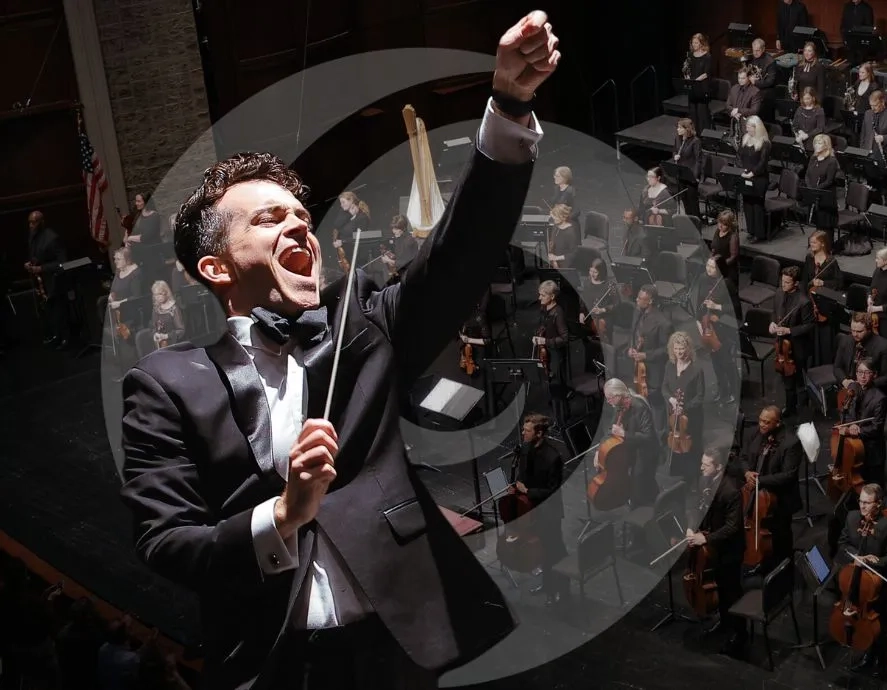
Concert Hall Series
Saturday performances at 7:30 pm
Sunday at 3:00 pm
Opening Night: Beethoven’s Ninth
October 5 & 6
Grieg’s Piano Concerto
November 23 & 24
Tchivzhel Conducts Tchaik 4
January 25 & 26
Duke Ellington’s The River
March 1 & 2
Jacqueline Tso plays
Bruch’s Scottish Fantasy
April 5 & 6
Beethoven and Brazil
May 10 & 11
Gunter Theatre Series
Performance start times vary
Peter and the Wolf
November 9 & 10
The Marriage of Figaro
February 15 & 16
Movers, Shakers, and Noise-Makers
March 22 & 23
Bach-Inspired with Violist Kathryn Dey
May 24 & 25
Special Events
Holiday at Peace
Peace Concert Hall
December 6 at 7:00 pm
December 7 at 1:00 & 7:00 pm
December 8 at 2:00 pm
Harry Potter and the Prisoner of Azkaban™ in concert
Peace Concert Hall
January 11 at 1:00 pm and 7:00 pm
January 12 at 2:00 pm
Star Wars: The Empire Strikes Back in Concert
May 4 at 7:00 pm
Bon Secours Wellness Arena
Music at Hotel Hartness
A luxe chamber music experience in a beautiful space.
Performances at 7:00 pm
Dracula! with Special Guest Dacre Stoker
October 23
Musical Landscapes
April 23
Music in the Gray Loft
Enjoy lunch or wine with a friendly, casual chamber music experience.
Performances at 12:00 and 5:30 pm
Dracula! with Special Guest Dacre Stoker
October 24
Musical Landscapes
April 24
Details and tickets available at greenvillesymphony.org
